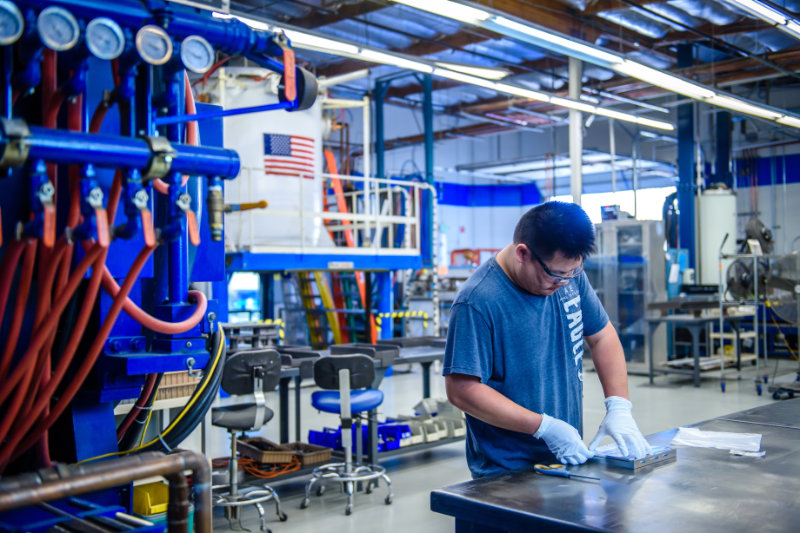
Hydrogen Brazing Summary
Brazing in an inert gas like Hydrogen (H2) is a very common method for joining materials like copper and stainless steel to make assemblies destined for high vacuum applications or UHV applications (Ultra-High Vacuum). Hydrogen furnace brazing is a core competency of our Brazing Services here at Altair Technologies. Although Hydrogen brazing alloys and fillers do not use a flux, H2 acts as a fluxing agent to reduce oxides and remove hydrocarbons. Many oxides, such as oxides of iron (steel), copper, nickel, etc., are easily reduced by Hydrogen, whereas many others, such as aluminum, titanium, and beryllium are very difficult to reduce.
It is arguably the best method for joining metals to metallized ceramics, brazing stainless steel, and brazing copper to themselves and to other metals.
Dry Hydrogen is used instead of wet Hydrogen when materials form oxides at relatively low dew points. Moly, Tungsten and Stainless Steel are all processed in Dry Hydrogen. Unless a very dry atmosphere is needed, Wet Hydrogen, being better at removing residual hydrocarbons than dry Hydrogen, is the preferred atmosphere.
The question of whether to use wet or dry hydrogen brazing is a question about whether one wants to reduce oxides or remove hydrocarbons as it relates to the materials to be joined. In addition to the explanations below, our post on brazing copper in hydrogen gas offers more clarity with regards to why wet or dry hydrogen brazing would be chosen as it relates to copper. Equally helpful is our post on brazing stainless steel, further explaining the choice between Dry and Wet hydrogen brazing atmospheres for stainless.
Dry Hydrogen
Dry Hydrogen is one of the most active agents for reducing the oxides of many metals in the furnace. If an oxidized metal is heated to a sufficiently high temperature in dry hydrogen, the oxide of that metal will be reduced to native metal and the oxygen emissions will combine with hydrogen to form water. In order to create ideal conditions, in which the brazing alloy creates a joint with the native metal, a dry hydrogen environment can ensure a successful braze joint.
The resultant parts are metallurgically bonded across the entire mating surface, offering optimized thermal conductivity as well as strong hermetic seals to 10-10 vacuum scale. They come out of the furnace in an ultra-clean condition, free of surface hydrocarbon contaminants, oxide layers and chemical cleaning residues offering an aesthetically pleasing, product with a well-defined, uniform braze fillet.
Dry Hydrogen atmospheres are used instead of wet Hydrogen when materials form oxides at relatively low dew points. Moly, Tungsten and Stainless Steel are all processed in dry Hydrogen. Stainless steel is chromium-rich and readily forms chromium oxide on its surface when heated and is therefore commonly brazed in a Dry Hydrogen atmosphere.
Wet Hydrogen
Unless a very dry atmosphere is needed, wet Hydrogen, being better at removing residual hydrocarbons than Dry Hydrogen, is the preferred atmosphere. Argon, Helium and forming gas are also used in specialty applications. Stainless steel can also be Nickel plated and safely brazed in a wet Hydrogen atmosphere too.
Contact one of our advanced material joining specialists today for a quick feasibility study of your project.



